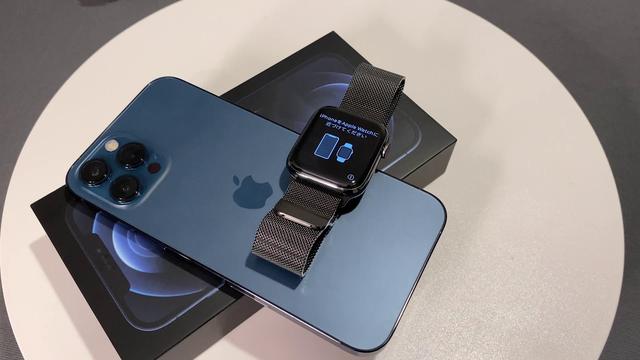Magnets on mobile phones and smart watches can affect pacemaker and other implanted medical devices, according to the FDA
Washington - Some consumer electronic devices, such as certain mobile phones and smart watches, include high -intensity of field, according to recent studies they have shown that they can make certain implanted medical devices change to the “magnet mode” and suspend normal operations untilThat the magnet moves away from the medical device, transcended Thursday by the Federal Drug and Food Administration (FDA).
Many implanted medical devices are designed with a "magnet mode" to allow safe operation during certain medical procedures, such as undergoing magnetic resonance.In general, doctors use these safety functions by using a high -intensity field magnet that is placed near the implemented device and places it in a "magnet mode".The elimination of the magnetic field causes the device to return to normal operation.
Precautions for patients with pacemaker and other implanted medical devices
FDA recommends that patients maintain all electronic consumption devices that can create magnetic interference, including cell phones and smart watches, at least six inches away from the medical devices implanted, in particular cardiac defibrillators.Many implanted medical devices have written information for patients approved by the FDA (patient label), which warns patients who keep all cell phones and smart watches at least six inches from the implanted medical device.
People with implanted medical devices may want to take some simple precautions, which include:

Keep consumer electronic devices, such as certain cell phones and smart watches, six inches away from implanted medical devices.
Do not carry electronic consumption devices in a pocket on the medical device.
Check your device using your home monitoring system, if you have one.
Talk to your medical care provider if you have any symptoms or have questions about magnets on electronic consumption devices and implanted medical devices.
When they are near high -resistance magnets, devices with a safe magnetic mode could stop working or change the operation of the device.For example, it is possible that a cardiac defibrillator cannot detect taquicardia events.O You can change the operational mode of the devices, such as activating the asynchronous mode (that is, two or more events that do not happen at the same time) in a pacemaker.
Cardiac implanted electronic devices are intended to help heart rhythm disorders, such as slow or fast heart rate.When the device stops working, a patient may experience dizziness, loss of knowledge or even death if therapy is not administered when discharges that save life are required.
It is important to emphasize the following: to avoid interference between cell phones, smart watches and their cardiac device, keep them at least six inches away from the implanted medical devices.In addition, do not place mobile phones, smart watches and other consumer electronic devices near your implanted medical device.
The FDA is aware of the published articles that describe the effect that sufficiently strong magnetic fields can activate the safe magnetic mode when they are in close contact.The FDA also performed its own tests in some products that use the function of high field intensity magnet and has confirmed that the magnetic field is consistent with the publications and strong enough to activate the magnetic safety mode of the medical devices in question.The FDA believes that the risk for patients is low and the agency is not aware of any adverse event associated with this problem at this time.
The FDA continues to monitor all the relevant scientific information about this problem in progress and will continue to take the appropriate measures, including information to the public and the supply of additional information, if the need arises based on its risk analysis.
